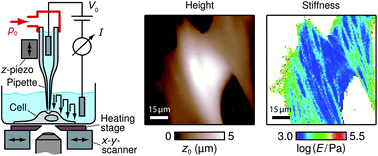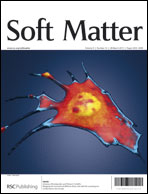Abstract
Mapping the mechanical properties of living cells with high spatial and temporal resolution is important for the exploration of cell function. Widely used imaging techniques such as the atomic force microscope are generally based on direct mechanical contact between the probe and the cell, thereby involving the risk of damaging the cell. Here, we present a noncontact method for fast and quantitative stiffness mapping of living cells with sub-micrometer lateral resolution. This was achieved by repeatedly moving a pressurized nanopipette toward and away from the sample in a scanning ion conductance


 Please wait while we load your content...
Please wait while we load your content...